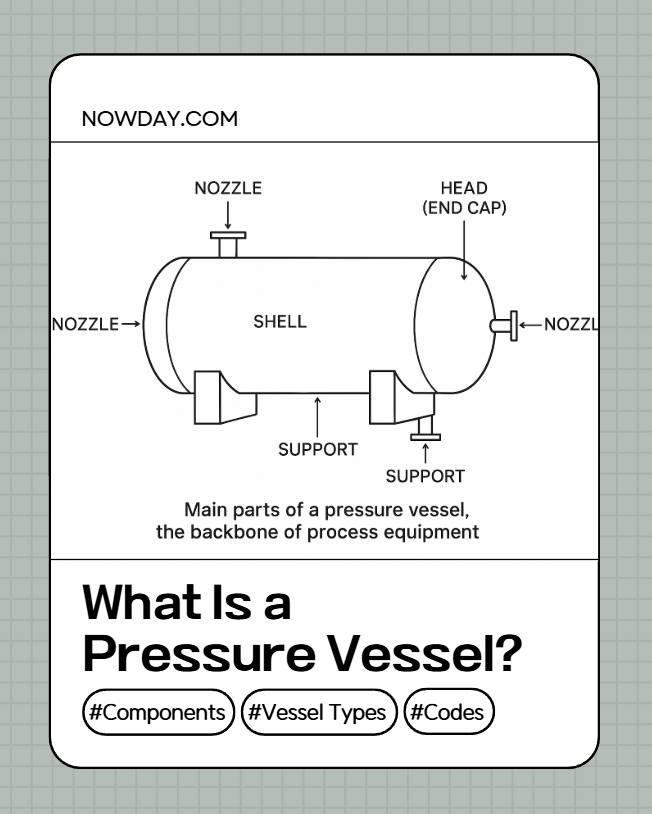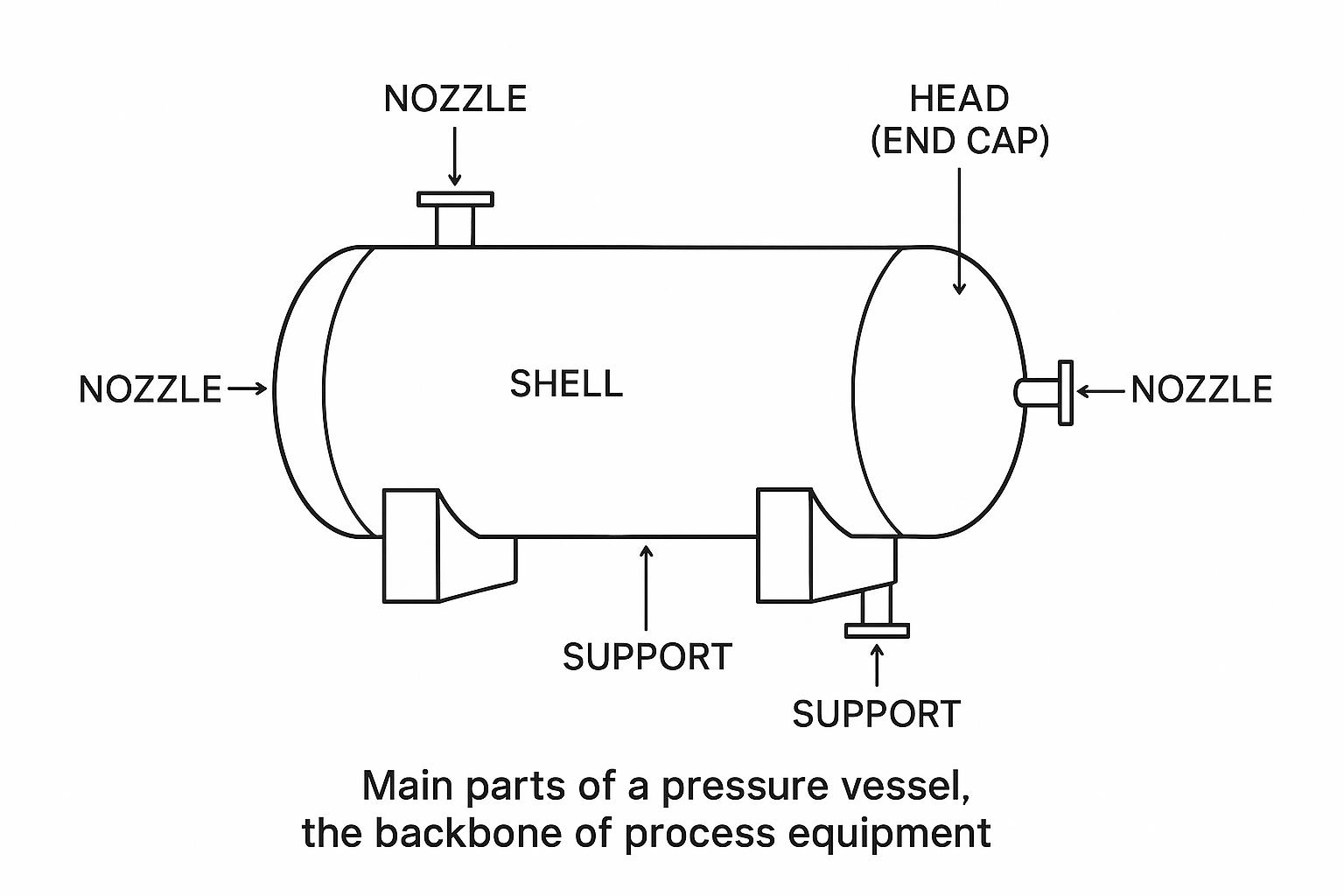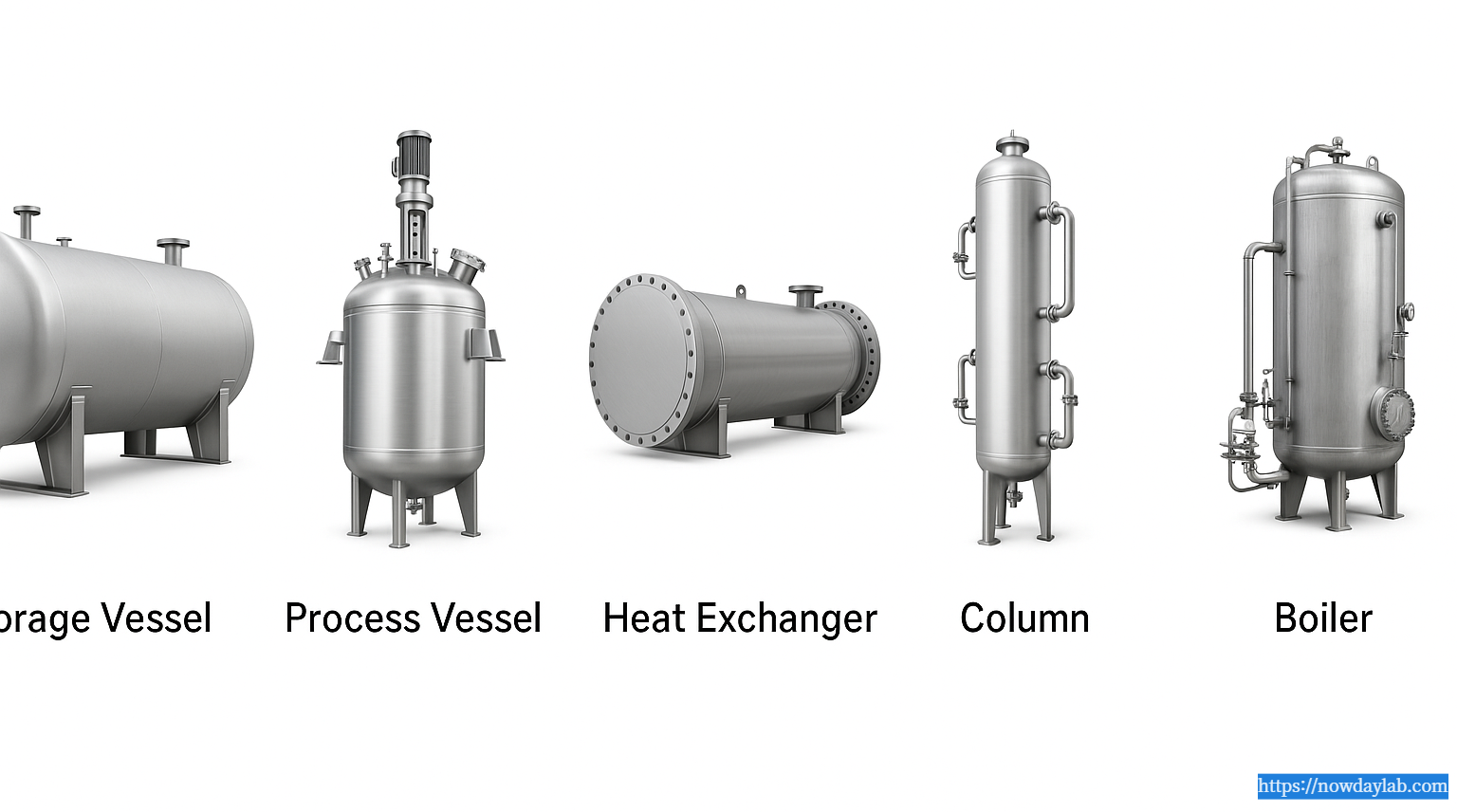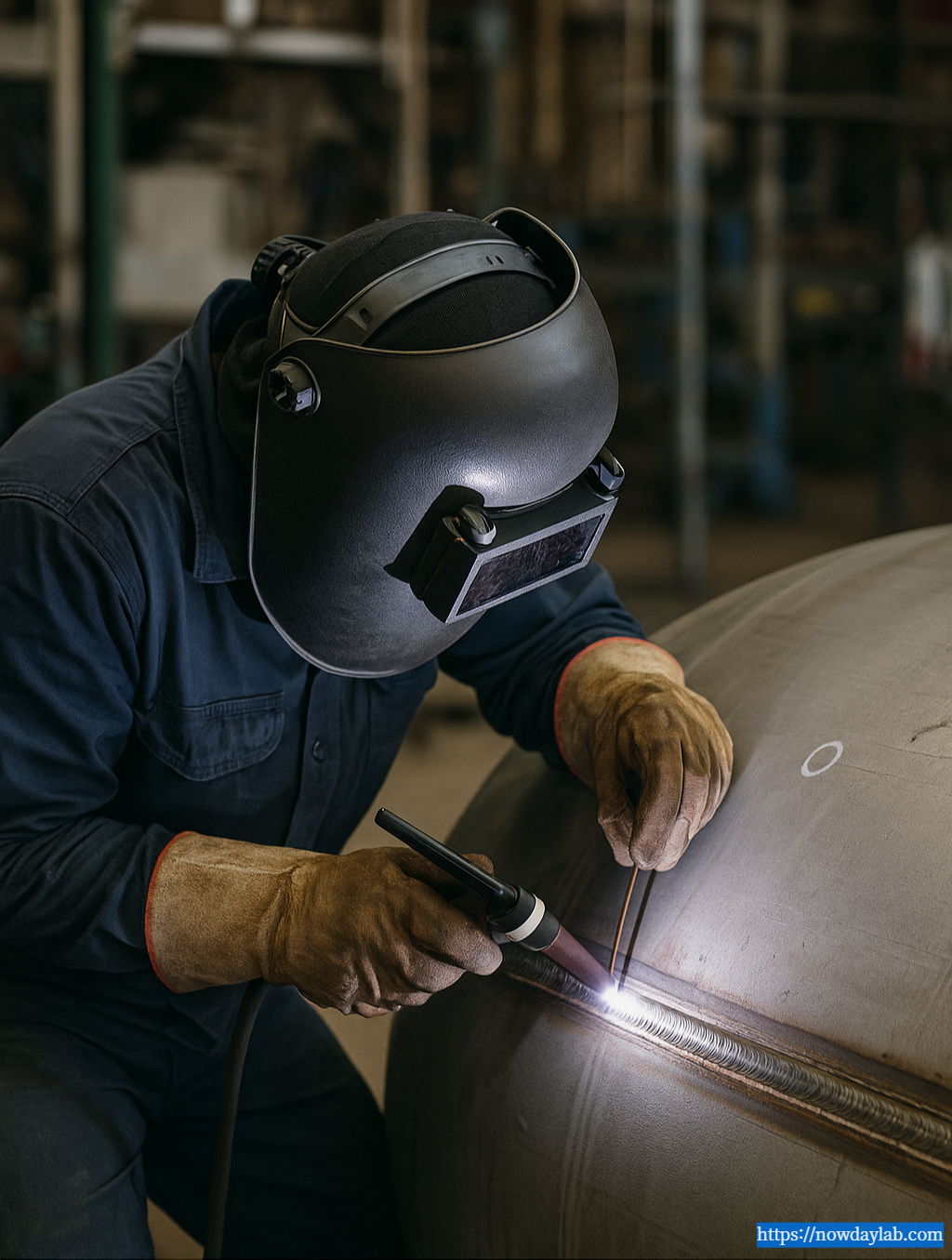
Introduction
Ask anyone who’s spent a few years around plants —a pressure vessel isn’t just a big metal tank.
It’s the heart of any process line. When one goes wrong, you’re not just stopping production; you’re flirting with disaster.
These vessels hold everything from compressed nitrogen to solvent vapor, and they do it under serious pressure.
That’s why design, welding, and inspection need to be done right — not “document right”, but reality right.
Let’s break it down without the sugarcoating: what a vessel actually is, how it’s built, and what codes keep you from blowing one up.
1. What a Pressure Vessel Actually Does
In short: it keeps pressure where it belongs.
Whether it’s gas, solvent, or deionized water, the job is the same —
hold it, heat it, move it, and don’t let it leak.
You’ll find them everywhere:
- Chemical plants storing ammonia
- Semiconductor fabs handling nitrogen or IPA
- Pharma systems pushing WFI or steam
Most failures don’t come from “bad materials”.
They come from bad assumptions — someone didn’t check wall thickness against real pressure, or skipped a proper hydrotest.
2. Main Components (and What Usually Fails)

Every vessel has five main parts, but the devil’s in the details.
- Shell:
That big cylinder in the middle. It’s what takes most of the pressure load.
If it’s too thin, you’ll see deformation near nozzles first. - Heads:
Elliptical, torispherical, or hemispherical.
2:1 elliptical is the shop favorite — cheaper to roll, easy to weld, strong enough for most jobs. - Nozzles:
Inlets, outlets, vents, drains, manholes.
Watch for misalignment — I’ve seen more leaks here than anywhere else. - Supports:
Skirt, leg, or saddle.
Design them wrong and vibration will eat your welds alive.
3. Common Vessel Types You’ll Actually See

| Type | Description | Where It Shows Up |
| Storage Vessel | Just holding gas or liquid under pressure | Air receiver, LPG tank |
| Process Vessel | Reaction or mixing under pressure | Reactor, separator |
| Heat Exchanger | Two fluids exchanging heat under pressure | Plant utilities, chillers |
| Column / Tower | Vertical vessel for distillation | Chemical, refinery |
| Boiler | Steam generation | Power, plant utility |
Storage ones are the simplest; process vessels are where headaches start — nozzles all over, agitators, heating coils, you name it.
4. Design – What Really Matters
Here’s where paperwork meets physics.
You can design with ASME formulas all day, but the question is:
will the shop actually build it that way?
- Pressure & Temperature – never guess. Use real operating data, not P&ID placeholders.
- Corrosion Allowance – stainless doesn’t mean eternal; add 1.5mm if you’re dealing with acidic gas or solvents.
- Material – SUS316L for chemical, CS for air, Duplex if you’ve got chloride.
- Welding – PQR/WPS/WPQ must match. Seen too many TIG jobs done with wrong filler.
- Inspection – always RT or UT on head seams. PT won’t catch the deep ones.
5. The Codes That Keep You Out of Trouble
ASME Section VIII (U Stamp)
The real bible. If your vessel runs above 15 psi, you’re in this territory.
Design, material, inspection, testing — all spelled out.
When you see that U-stamp plate, it means the vessel passed serious scrutiny.
PED (Europe)
Same concept, different bureaucracy.
Anything over 0.5 bar needs CE marking. Mostly paperwork-heavy, but mandatory in the EU.
KGS (Korea)
If you’re in Korea, this one rules the game.
AC111 (design), AC112 (fabrication), AC113 (inspection).
And trust me, they check everything — drawings, WPS, welder certs, even MTR heat numbers.
6. Testing — Where You Find the Truth
No matter what the drawings say, testing tells you the real story.
- Hydrostatic Test – water fill, 1.5× design pressure. This is where bad welds confess.
- Pneumatic Test – only if hydro’s impossible. Treat it like a live grenade.
- NDT – RT for welds, PT for surface cracks, UT for thickness. Don’t skip VT — most cracks are visible if you actually look.
Once everything passes, tag plate gets stamped, paperwork archived, and you’ve got yourself a legal pressure vessel.
7. Heads – The Unsung Heroes
| Head Type | Comment from the Shop Floor |
| Hemispherical | Strongest, but a pain to fabricate and expensive. |
| Ellipsoidal (2:1) | Everyone’s go-to. Easy to roll, strong enough. |
| Torispherical | Flat, cheap, good for moderate pressure. Just don’t push it. |
If you see a flat head on a high-pressure tank — walk away.
8. Real Example

Let’s say you’re building a 6-ton LPG storage tank for a fab line.
Design pressure: 10 bar.
Material: SUS316L.
Hydrotest: 15 bar.
After KGS inspection under AC112, the inspector signs the form and stamps the plate.
That’s when you can finally sleep at night.
Conclusion
Pressure vessels don’t forgive mistakes.
Every shortcut — in design, weld, or inspection — becomes a time bomb.
Do it right once, and it’ll run for 20 years without a hiccup.
And if you’re managing vendors?
Never trust a clean surface — trust the paperwork, and then double-check the welds yourself.
'INDUSTRIAL ENGINEERING > Pressure Vessels & Tanks' 카테고리의 다른 글
| Pressure Vessel Testing & Inspection – What Really Happens on Site (0) | 2025.11.02 |
|---|
